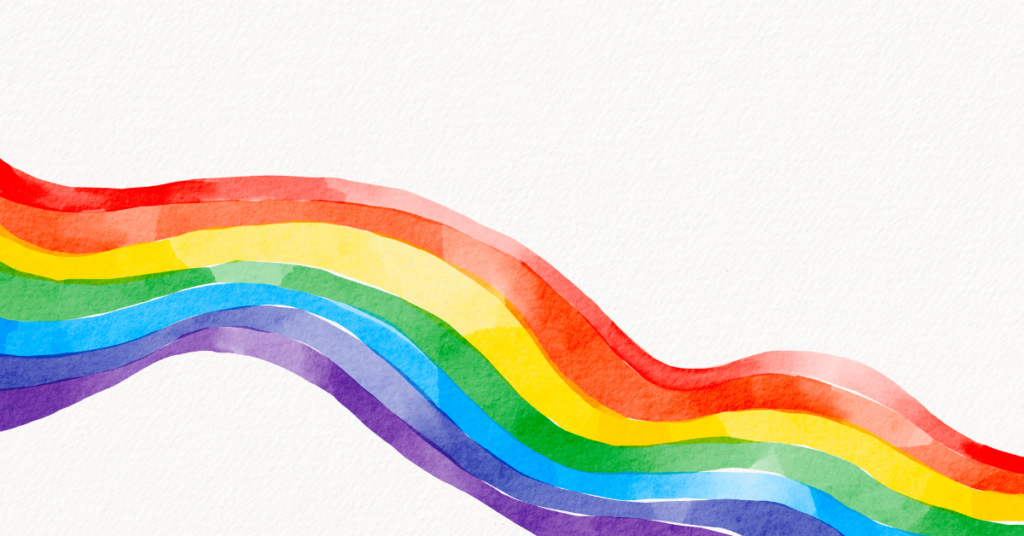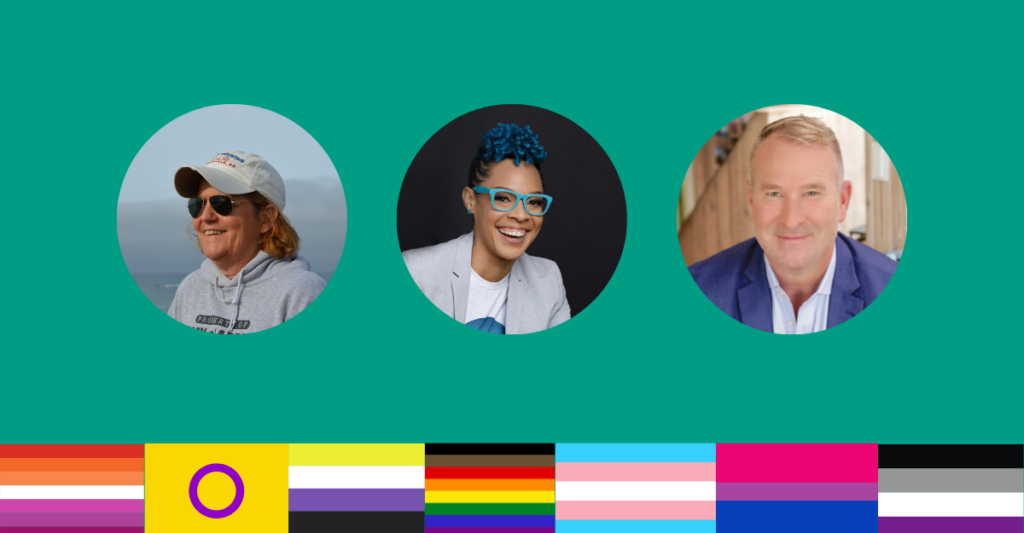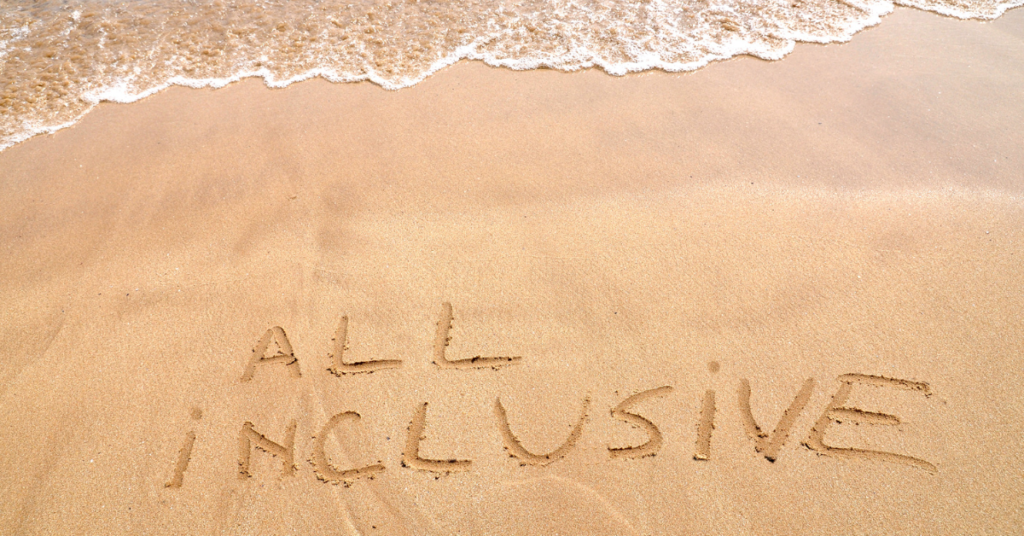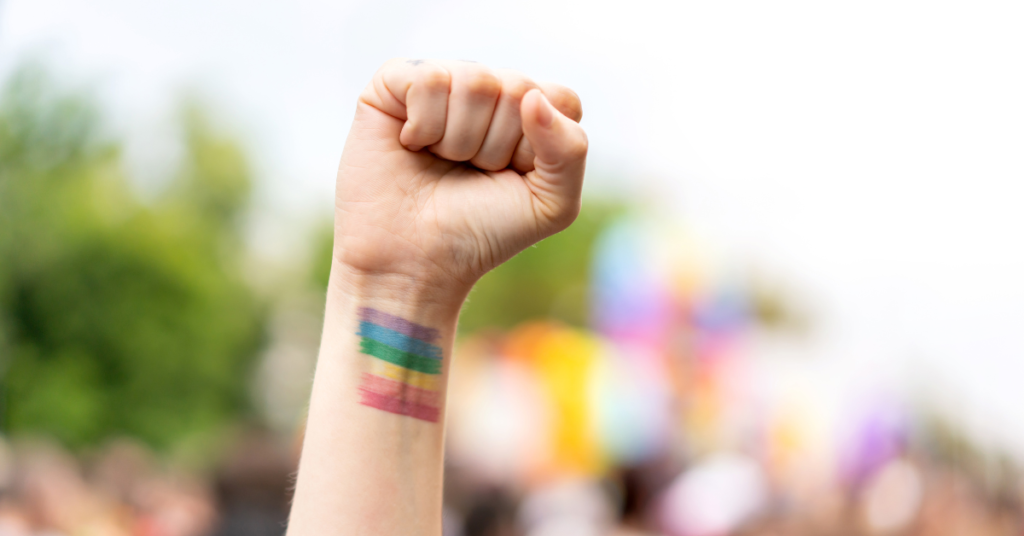Why, as a movement, we need to be engaging with and providing more equitable opportunities for LGBTIQA+ stakeholders, beyond Pride Month
June means Pride Month, a.k.a that time of year when companies around the world splash rainbow flags across their marketing in a gesture of inclusion and solidarity, to advertise everything from mouthwash to mutual funds.
Designed to be bright and bold a signal to LGBTQIA+ communities, and beyond, that they are valued and accepted both as customers and workers – for many, the rainbow onslaught can be seen as a cringeworthy attempt to court business and ‘pridewash’ away the many harmful impacts that corporate interests have had (and continue to have) on queer people.
After all, it’s not just this month that ‘Pride’ is important; LGBTQIA+ people are a part of the global economy everyday — and feel its impacts all year long.
“In a few cities, Pride has become a celebration of diversity and inclusion. In some, it continues to be an outcry against hate and violence. And in many, where state persecution against gender and sexual minorities prevails, it is still a valiant, life-risking venture undertaken by a handful of activists in the name of visibility and justice.”
– Daniel Berezowsky

Art Illustration, Canva Pro
Wage gaps, exclusion and marginalisation
While diversity and inclusion have continued to climb the ladder of business priorities over the past decade, many LGBTQIA+ employees continue to face discrimination, discomfort, and even danger in the workplace.
From the challenges of ‘coming out’ in the workplace to microaggressions, isolation and even significant wage gaps in the workforce, this is an issue that is further compounded for those who experience further marginalisation at the intersections of race, gender, disability, class, and more. Not only are there very real and tangible direct costs of living and working as LGBTQIA+ people but there are myriad indirect costs that can lead to a substantial impact on earning capacity including brain drain and being left out of important conversations on impact investing and venture capital.
Beyond Pride Month, equity and inclusion must be incorporated at all levels of business, from the way we celebrate and value stakeholders to the messages and language in our marketing campaigns. Pride needs to go deeper than rainbow branding.
“As well as a wider representation of [LGBTQIA+ people] in business, we also need straight allies to be vocal about their backing and we need businesses to make a stand.”
– Lord John Browne, The Glass Closet, as quoted in The Guardian
B Lab Global recently spoke to three LGBTQIA+-led B Corps about why the movement should be prioritising this work all year round.

A vision for inclusion
Dr. Tiffany Jana, who goes by Doc Jana, Founder and CEO of diversity and inclusion management consultancy and B Corp TMI Consulting, shares that:
“Increased LGBTQIA+ visibility in the workplace creates a sense of welcome and belonging for the queer community — whether they are out or not.
There are many ways that leadership can signal that a workplace is welcoming to LGBTQIA+ employees, from everyday actions like normalising sharing of pronouns to larger-scale commitments like codifying company policies and procedures for inclusive health and reproductive care, parental leave, shared facilities, and more.”
Yet beyond establishing these norms, there’s a broader positive impact that comes from uplifting and celebrating the contributions of LGBTQIA+ workers — including the power of having visible LGBTQIA leaders. This is central to the work of B Corp Out Leadership, a business advocacy membership company that works with CEOs and multinational companies to advance equality, economic impact and policy change.
Out Leadership Founder & CEO Todd Sears adds that:
“We often find that people who have their own ‘coming out’ experience or can relate to the experience of being different are detailed, conscious, and empathetic leaders.
This has a positive effect on both worker wellbeing and business because employees who have the chance to show up each day as who they are and feel a sense of partnership with a company that respects them are much more productive and inclined to create value for the company.”
It bears repeating that LGBTQIA+ workers are not defined by this facet of their identity alone. In fact, LGBTQIA+ inclusion should be one complementary part of a holistic approach to justice, equity, diversity, and inclusion across the company, recognising the ways in which other aspects of identity impact employees’ workplace experience.

Image by Warmcolors on Getty Images
Use the stethoscope, not the bullhorn, approach
Senior Advisor on implementing the UN Guiding Principles on Business and Human Rights across a variety of industries, Daniel Berezowsky advocates taking a ‘stethoscope’ rather than ‘bullhorn’ approach to inclusion.
In his piece from 2019 on ‘True Corporate Allyship’ for the Shift Project, he cautions that:
“Most companies that decide to support LGBTQIA+ rights take the ‘bullhorn’ approach. They target markets where they can be ‘loud and proud’, and look for ways to boost their queer allyship, through rainbow products, donations or ‘inclusive’ advertising.
Not many companies, however, start their search from within. Using a ‘stethoscope’ approach means that, before a company considers making a public statement on LGBTQIA+ rights, it should assess how its products, services, operations and practices are impacting (or could impact) LGBTQIA+ people negatively.”

Image by Towfiqu Barbhuiya on Canva Pro
Widen the aperture of your equity lens
For Nancy Geenan, Principal & Chief Executive Officer of Flexability, an equity and inclusion consulting firm and B Corp, doing this work well is rooted in professional and personal experiences.
Their executive team each brought to their work a strong equity lens, Geenan says, adding that the team had lived experiences that would have been better had they been able to be ‘out’ or to self-identify in whatever way they needed to. Changing the world by changing workplaces, she says:
“When we broadened the aperture of working with more identities than just disability, we had a pretty good strategy in place. We believe championing people is good for business and companies who understand, adopt, and lead with the stakeholder primacy see greater returns throughout their organisation.”
By widening the lens, we also support the cultivation of more complex narratives, adds Doc Jana of TMI Consulting. People are not one-dimensional. Instead, nuanced narratives and enabling or cultivating a culture of plurality, we can use our businesses to help build bridges and break down stereotypes that would otherwise divide us.
“Embracing the complexity of identity is a core tool when it comes to confronting the challenges of workforce inclusion.”
– Doc Jana

Image by Heru Setiawan on Getty Images
Not everyone will like it, but equity is good business
For each of these B Corps, working to achieve and maintain certification has been a part of the pathway to doing work that helps other organisations improve their culture and create supportive environments for employees experiencing marginalisation in the workplace — starting with their own internal practices.
According to Doc Jana, the B Impact Assessment has been key in ‘shaping the evolution’ of their company for over a decade:
“We have many policies and structures in place that would not have been considered for many years save for the Assessment’s insights and guidance. We are more resilient overall and have far more employee-centric policies as a result.
“Not everyone will be pleased with the celebration of LGBTQIA+ identities; people who hold onto bigoted and biased ideas, particularly when attached to religious beliefs, may create pressure within the organization.
Leaders need to stick to their values, support inclusion, and be prepared to defend their stance when pressure is applied. The best defence is still a very clear inclusion vision.”
Geenan — also a member of We the Change, a collective of women B Corp leaders — says that Flexability, who certified in 2021, was built as ‘a B Corp from the beginning,’ noting that the principle of bringing benefit to all stakeholders is key to their work:
“Equity and inclusion is what stakeholder primacy is really about. It’s making sure that every person who’s important to that daisy wheel of the business has tools and resources and opportunities.”
In working with Out Leadership’s clients, Todd Sears emphasises that ensuring equitable opportunities in the workforce also has wider benefits.
“I like to argue that LGBTQ equality in the workplace is just good business. At Out Leadership we call it ‘return on equality.’ There is so much value to be realised when we as a business community address the specific and unique needs of traditionally underserved communities. Ultimately, it’s the only way to promote sustainable, long-term growth.”

Image by Stock-eye on Getty Images
Creating ‘return on equality’
To make a lasting difference in the lives of LGBTQIA+ employees, and to be credible in the eyes of other LGBTQIA+ stakeholders, including customers and communities they operate in, businesses need to show up beyond Pride.
Sustainable and long-term are key. Businesses need to admit that they’re vulnerable to mistakes and missteps (like rainbow-branded mouthwash), and commit to learning and doing better.
As Nancy Geenan says:
“These have to be conversations that we have more than once a year. We’ve got to have a way to have sustainability and intersectionality of all these identities — so that we are celebrating each other all of the time.”
How is your B Corp ensuring a more inclusive, equitable, and regenerative global economic system for all people and the planet beyond campaigns like Pride Month?
Learn more about B Lab’s Global JEDI Strategic Plan.
An original version of this article was published here and adapted by B Lab Australia and Aotearoa New Zealand.

